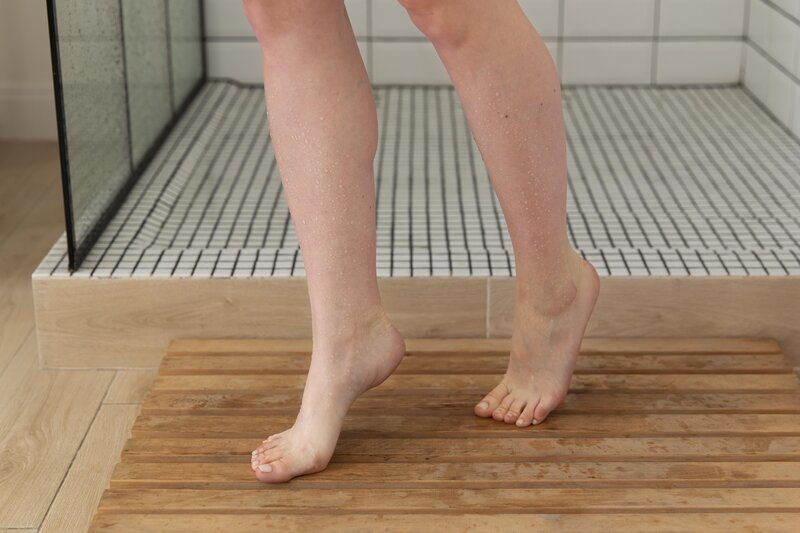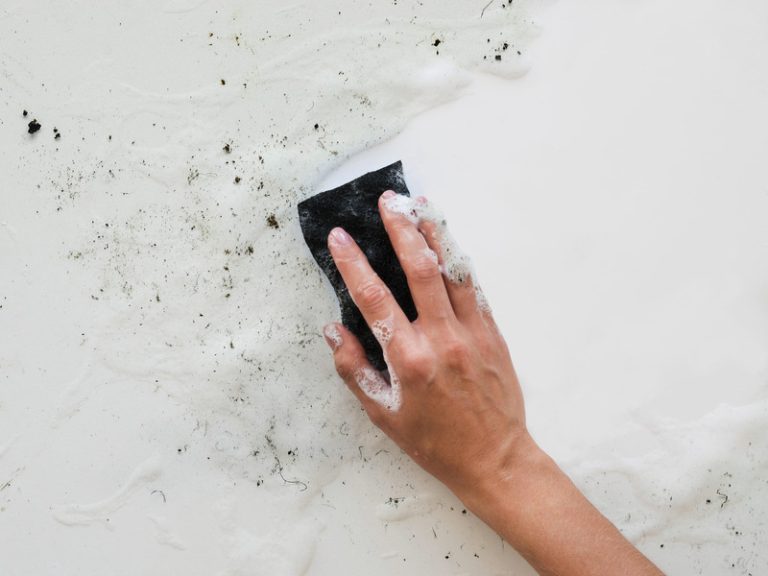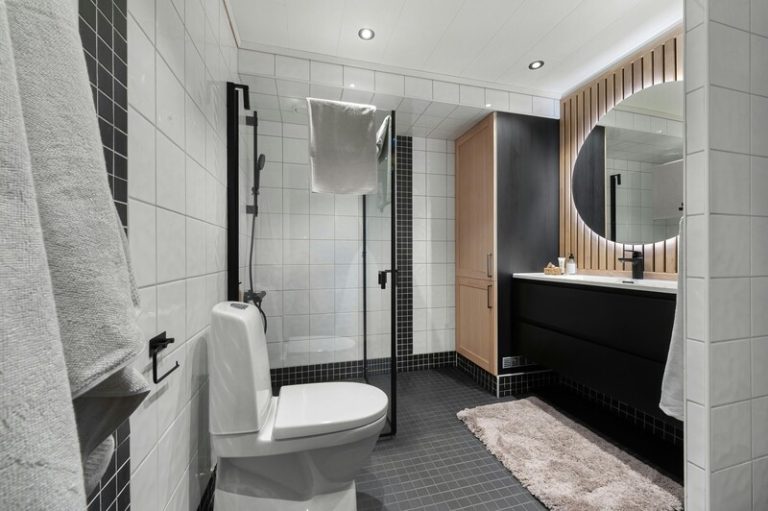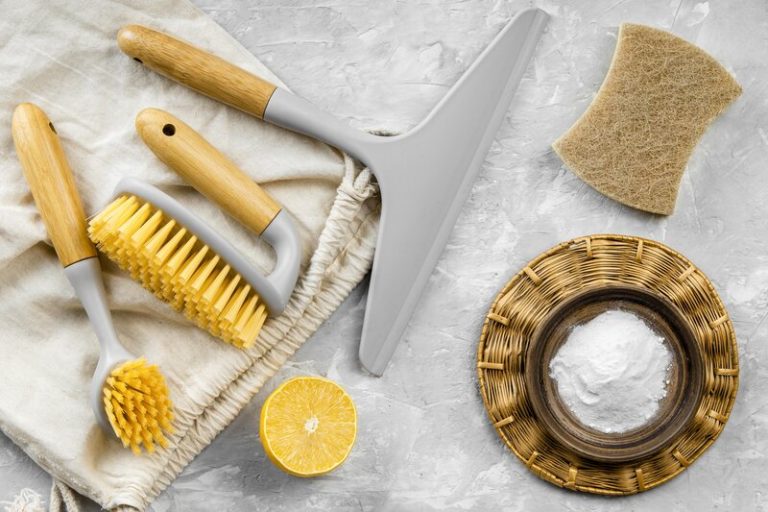A bathroom floor flooded after a shower is not only frustrating but can also lead to potential water damage and mold growth. Understanding how to mop a bathroom floor is crucial, but addressing the root causes of flooding is equally important. Whether it’s clogged drains, faulty shower pans, or improper sealing, a flooded bathroom floor needs immediate attention to avoid long-term issues.
This guide will walk you through the common causes of bathroom flooding and practical steps to prevent it from happening in the future, ensuring a dry and safe bathroom environment. Stay on top of regular maintenance and be prepared to act quickly when necessary.
Why Is My Bathroom Floor Flooding After Shower?
Experiencing a flooded bathroom floor after a shower can be frustrating and alarming. It often indicates underlying issues with your shower drain or plumbing, where water accumulates for various reasons.
Common causes of this flooding include a blocked shower drain, leaking pipes, or even a damaged shower tray. Understanding the root causes not only helps in identifying the problem but also aids in implementing effective solutions.
If not addressed promptly, these issues can lead to more serious damage, making it essential to investigate the situation as soon as possible.
What Are The Possible Causes Of A Flooded Bathroom Floor After Shower?
Understanding the possible causes of a flooded bathroom floor after a shower is crucial for effective resolution and prevention. Many households experience this issue, and it can stem from various factors, including:
a. Clogged Drain and How to Unblock It
If you’ve noticed a flooded bathroom floor after shower, a clogged drain is often to blame. Debris like hair and soap scum can block water flow, causing water to pool.
To unblock it, try pouring boiling water down the drain, followed by a mix of bicarbonate of soda and vinegar. These natural remedies can clear minor blockages, saving you from costly repairs and restoring proper drainage.
b. Damaged Shower Pan
A cracked or poorly sealed shower pan could lead to a flooded bathroom floor after shower use. Water leaks from the tray can accumulate on the floor, potentially damaging surrounding areas.
Regularly inspect for cracks or stains and consider repairing small issues with waterproof sealant or fiberglass kits. Addressing these problems early will help prevent serious water damage and costly repairs later on.
c. Leaking Pipes
Leaking pipes are another common cause of a flooded bathroom floor after a shower. These leaks may occur in various parts of the plumbing system and often go unnoticed until water accumulates on the floor.
Look for signs like water stains or increased water bills, and fix leaks promptly to avoid structural damage. Regular plumbing inspections can help you catch leaks early and prevent bigger issues down the road.
d. Improperly Installed Shower
Improper shower installation is a frequent cause of a flooded bathroom floor after showering. If the shower angle or drainage is incorrect, water can spill onto the floor instead of draining away.
Ensure your shower is properly installed by a qualified professional to avoid water damage. Regular checks for leaks and drainage issues can prevent flooding and protect your bathroom from long-term damage.
e. Broken Shower Head
A malfunctioning showerhead can contribute to a flooded bathroom floor after showering, as it may cause excessive water flow that doesn’t drain properly. Common issues like mineral buildup or faulty gaskets may lead to leaks and poor water distribution.
Regularly clean your showerhead with vinegar to remove buildup, and replace damaged parts to ensure efficient water flow and prevent flooding in your bathroom.
How To Prevent A Flooded Bathroom Floor After Shower?
Preventing a flooded bathroom floor after a shower requires regular maintenance and proactive measures to ensure your plumbing system is functioning correctly. Key steps include:
a. Regularly Clean and Maintain Drains
To prevent a bathroom floor flooded after shower, cleaning drains regularly is key. A blocked drain can cause water to back up and flood your bathroom.
Use hair traps, schedule monthly cleanings with bicarbonate of soda and vinegar, and perform an occasional snake treatment to clear stubborn clogs. These steps ensure smooth drainage, keeping your bathroom dry and functional.
b. Check for any damages in the shower pan
Checking the shower pan for damage helps prevent a bathroom floor flooded after shower. Inspect for cracks, chips, or raised edges that may allow leaks. Discolouration or soft spots may signal water damage.
Ensure the drainage holes are clear and reseal edges with waterproof sealant every few years. Timely inspections save you from costly repairs down the line.
c. Inspect Pipes For Leaks
Inspecting pipes for leaks is essential to avoid a bathroom floor flooded after shower. Check for dampness or stains around pipe joints, and watch for signs of corrosion. An increase in water bills may also signal hidden leaks.
Preventative steps like insulating pipes or tightening connections can prevent leaks, and routine plumbing checks with professionals help maintain a dry home.
d. Ensure Proper Installation Of Shower
Proper shower installation prevents a bathroom floor flooded after shower by ensuring correct drainage and plumbing setup. A poorly installed shower can cause water to pool, leading to flooding.
Hire qualified professionals to ensure a correct slope, secure caulking, and effective drainage. This step safeguards your bathroom from leaks and long-term damage, ensuring a functional and leak-free shower.
e. Replace Broken Shower Heads and Maintain Shower
Replacing broken shower heads is vital to prevent a bathroom floor flooded after shower. A malfunctioning shower head disrupts water flow, causing pooling. Look for signs like low water pressure, leaks, or mineral buildup, which indicate a need for replacement. Choose water-efficient models for better performance.
Regular maintenance ensures optimal functionality, extending the life of your shower and preventing flooding issues.
What To Do If Your Bathroom Floor Is Already Flooded After Shower?
If you find your bathroom floor flooded after a shower, acting quickly is essential to minimise damage and restore order. These steps include:
a. Turn Off The Water Supply
If your bathroom floor is flooded after a shower, the first step is to turn off the water supply. Quickly shutting off the main water valve helps prevent further flooding and damage.
Locate the valve, typically found near the water line entry point in your home, and ensure it’s easily accessible. Taking immediate action reduces damage and allows you to address the issue promptly.
b. Use a Wet/Dry Vacuum to Remove Excess Water
When your bathroom floor is flooded after a shower, using a wet/dry vacuum is an efficient way to remove excess water. This tool is designed to quickly extract water, preventing further damage and potential mould growth.
Start by removing large objects and making several passes with the vacuum. Afterward, use fans or dehumidifiers to speed up the drying process.
c. Dry The Affected Area Thoroughly
Once the water is removed, drying the affected area is vital to avoid future issues like mould growth. After the bathroom floor is flooded after a shower, use fans and dehumidifiers to remove any remaining moisture.
Open windows and doors to promote airflow. Regularly monitor the area for dampness, and address it promptly to ensure the space remains dry and free from damage.
d. Address The Root Cause Of The Flooding
After the bathroom floor is flooded after a shower, addressing the cause of the flooding is crucial. Inspect drains, pipes, and the shower tray for blockages or damage. Regular maintenance can prevent future floods.
If issues persist, contact a professional plumber to assess the situation and provide necessary repairs, ensuring long-term protection for your bathroom and plumbing system.
So, if you’ve ever experienced a bathroom floor flooded after shower, you know how quickly it can turn from a small inconvenience to a serious issue. It’s crucial to identify the underlying cause and take action before water damage, mould, or further complications arise.
By staying on top of regular maintenance, you can avoid this frustrating problem altogether. Instead of dealing with the aftermath yourself, consider using TEKA Cleaning’s house cleaning services in Cambridge services for deep cleaning and peace of mind. With our expertise, we’ll ensure that your bathroom stays dry and hygienic, preventing future flooding.
Don’t risk damage or stress, contact TEKA Cleaning now at 01223 751 544 for a thorough, professional clean that guarantees your bathroom’s safety and cleanliness.
Read also:











